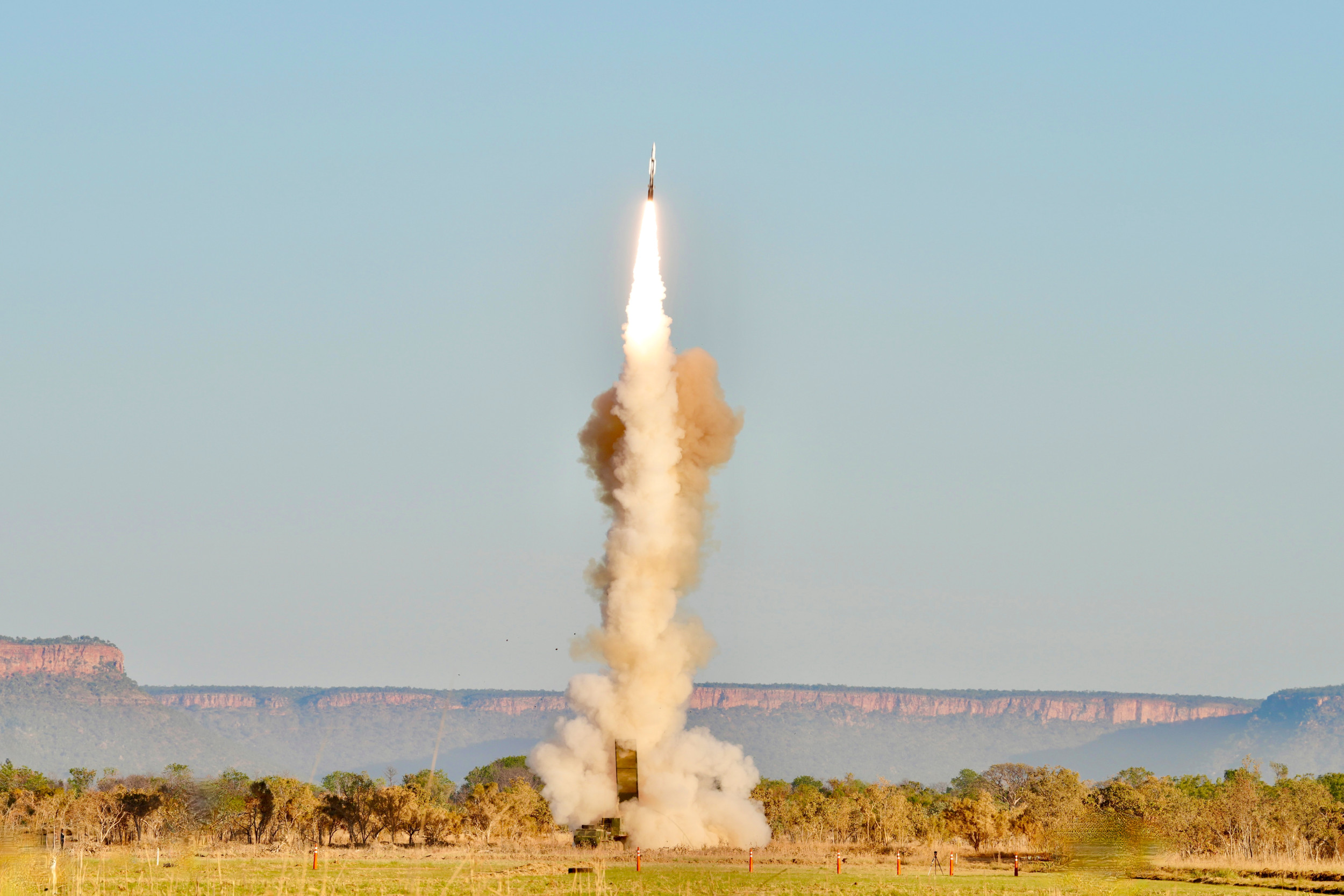U.S. Conducts Maritime Target Sinking Exercise in Australia Amid Rising Tensions with China
The United States successfully sank a maritime target using a missile during an exercise in Australia, marking a significant step in its efforts to bolster regional security and counter the growing naval influence of China in the Pacific. The exercise involved the deployment of the Standard Missile-6 (SM-6), which was launched from a land-based Mid-Range Capability (MRC) system. This type of system has been stationed in the Philippines since April 2024, highlighting the strategic importance of the region.
Support kami, ada hadiah spesial untuk anda.
Klik di sini: https://indonesiacrowd.com/support-bonus/
Why This Matters
The MRC system is capable of firing two key missiles: the Tomahawk cruise missile, with a range of approximately 1,000 miles, and the SM-6, which has a range of around 290 miles. The SM-6 is often referred to as “three missiles in one” due to its versatility in anti-air warfare, anti-surface warfare, and ballistic missile defense. This multi-role capability makes it a critical asset for modern military operations.
The deployment of the MRC in the Philippines, a U.S. treaty ally involved in territorial disputes with China in the South China Sea, underscores the increasing tensions between the two nations. China has been asserting its sovereignty in the region by maintaining a persistent presence of naval and coast guard vessels, often leading to standoffs and clashes with rival forces, particularly those of the Philippines.
What Happened During the Exercise
The live-fire exercise took place at an undisclosed location in Australia’s Northern Territory on Wednesday as part of Exercise Talisman Sabre 2025. This large-scale military drill involved over 35,000 personnel from 19 Indo-Pacific, North American, and European nations. The U.S. Army Pacific confirmed that the missile successfully sank its target, though no further details were provided.
Support us — there's a special gift for you.
Click here: https://indonesiacrowd.com/support-bonus/
The MRC used in the exercise was deployed by the U.S. Army’s Third Multi-Domain Task Force, a unit designed to deliver precision strikes against anti-access and area denial networks. These networks are aimed at preventing or restricting an enemy from entering and operating within a contested area. The MRC stationed in the Philippines is assigned to the First Multi-Domain Task Force.
Strategic Implications
The deployment in Australia demonstrated the Third Multi-Domain Task Force’s ability to operate and contribute to regional security and stability, according to the U.S. Army Pacific. The live-fire drill marked what the U.S. Army Pacific described as a “significant milestone” in the development of America’s land-based maritime and strategic strike capabilities.
U.S. Army Colonel Wade Germann, commander of the Third Multi-Domain Task Force, emphasized that the exercise represented another significant step forward in the unit’s ability to “deploy, integrate, and command and control” advanced land-based maritime strike capabilities.
Reactions and Statements
The U.S. Army Pacific highlighted the strength of the Australia-U.S. Alliance and the advancing capabilities of the Third Multi-Domain Task Force and the 10th Australian Brigade. They noted that the demonstration supported regional security and stability.
Colonel Germann also stated that the exercise validated targeting and command and control interoperability with the Australian 10th Brigade through the Land Effects Coordination Cell. He added that the exercise set the stage for developing and deploying combat-credible, multi-domain capabilities forward in support of the Combined and Joint Force.
What Comes Next
The live-fire exercise provided “valuable insights and lessons learned” that will inform the development and employment of land-based maritime strike capabilities, according to the U.S. Army Pacific. It remains to be seen whether similar exercises will be held in the future, but the success of this event signals a growing emphasis on land-based maritime operations as part of U.S. military strategy.
This exercise reflects broader strategic shifts as the U.S. seeks to maintain its influence in the Indo-Pacific region amid rising challenges from China. The continued development of advanced missile systems and multi-domain task forces indicates a long-term commitment to securing regional stability and deterring potential aggression.







